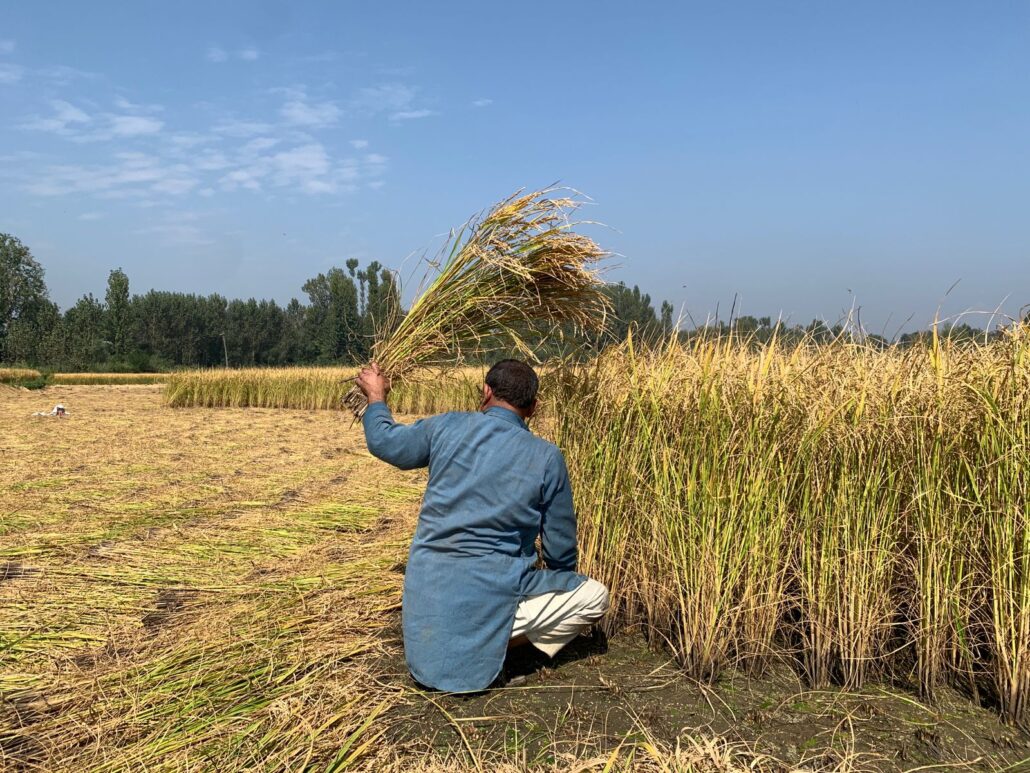
Hashim Manzoor
By Mid-September, the fields in Kashmir are abuzz with activity. As the dawns and dusks grow chillier, the rice straw in the paddy fields across the valley turns gold. Stretched to twelve districts of Jammu Kashmir, Rice is the staple food in Kashmir. This crop has the distinction of being the most extensively cultivated in Jammu Kashmir.
The area under the rice is distributed by both the regions in which about 40 per cent is from Jammu while as 60 per cent from Kashmir division (Statistical Digest, 2015-16).
Because of the extreme climatic conditions in Jammu Kashmir, rice is only grown once a year. Furthermore, the diversity in the agro-climate, when combined with farmer preferences, results in a wide range of grain preferences, ranging from bold, coarse grains in temperature regions to fine, aromatic, and basmati in subtropical areas.
The region has a long history of rice cultivation, and many of the landraces and traditional types grown in the past have been replaced by new high-yielding varieties. In his book “The Valley of Kashmir,” Walter Lawrence, the British Land Settlement Commissioner, catalogued a number of rice varieties and discovered 53 different types produced at a single location.
Around mid-September, Kashmiri agriculturists gather in family circles and chat about the other farming activity happening around that specific area. The Lunches and afternoon tea reaches the fields.
As the time arrives, the family members come to the paddy fields, position themselves in a corner of it, bend their knees and start to cut the yield.
A fair amount of rice straw is gathered in one hand and a sickle, in the other, gashes it in the bottom – separating the straw bearing the rice and the small stubble remains attached to the soil. Long parallel stretches of rice straw are spread in the field. Then, the paddy is left there to sun-dry for some days.
When the rice straw is deemed crisp, it is gathered. A fair amount of straw – at least what can be held by two hands – is bound together into a sheaf by a knot made from the straw itself. Every straw is bound into sheaves. The sheaves are piled in large heaps for threshing.
When everything is cleared out, the field is blemished with small stubble bristles sticking out of the soil.
A tarpaulin is spread beside the heap and a wooden logs – or, nowadays, cylindrical storage containers – are carefully placed on it.
The sheaves are pulled out from the heap and beaten against the log to separate the rice grains from the straw. Straw remnants are broomed out from the rice grains which accumulate infront of the threshing log.
The grains are poured into jute bags and stored in granaries, or straightaway taken to the rice mill. Edible rice kernels are separated from the husk and bran in the mills, and are made ready to consume.